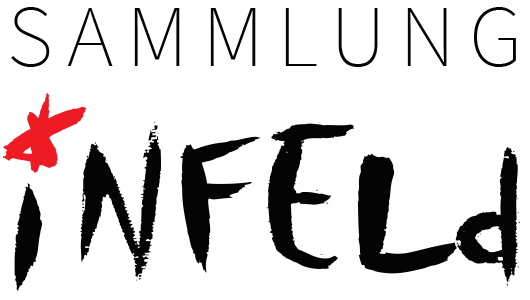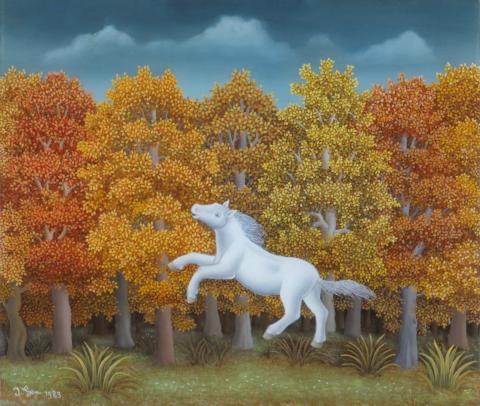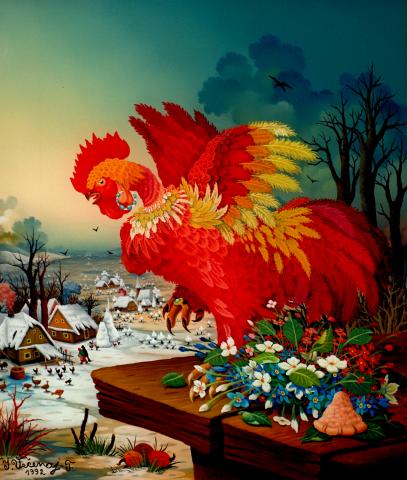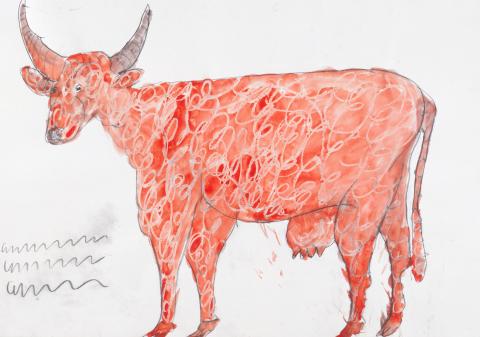Animal Portraits
Animal depictions of Naive and Art Brut artists are shown in an exhibition at the Infeld House of Culture in Halbturn. Exquisite birds and horses, other Animalia and exotics straight from the artist's imagination dream, love, and tell amazing stories about the world of animals and their extraordinary importance for humans. All approx. 100 works of art come from the Infeld Collection.
Peter Infeld (1942-2009) recognized the stature and importance of those who penetrated the darkness of their subconscious to emerge into the light. He discovered the originality and innocence of the creative spirit in the Naive and Art Brut works he had collected since the 1970s. The autodidacts stand outside the academic traditions and draw from the pure, unclouded sources of their intuition. The artists relate themes, selection of materials used, and graphical hand from your own internal life. They paint animals and creatures that they know best and invite the viewer to return to the exotic animal park of childhood.
Naive Painters
The naive painters seem to be wizards who are able to lead the viewer with brush strokes into a dreamy Arcadia. Their world is populated by cows that are thinkers and roosters that are lovers. Countless cows graze on the pastures of this world until the Croatian cows, painted by the young farmer Ivan Generalic, found their way into the Pantheon of Art. Full of emotions, with a pure heart, and without technical skills, the naive painters draw from life and transfer it to their pictures. Here are three examples:
The fantasy birds by Franjo Klopotan, who worked as a nurse, seem to fly directly into our eyes from the hand of Spring. Klopotan liked butterflies and birds as a child, he brought sick animals home with him and nursed them back to health.
Sava Sekulic, a professional bricklayer, created a world full of imagination and its own laws. His paintings of rare beauty lead to the border between reality and dream. His father taught him the alphabet, he learned everything else by himself. "I mostly paint what I see or imagine seeing on damp walls," said Sekulic.
After basic school, Ilija Bosilj, like all village children, kept the cattle and worked the fields all his life. His compositions with creatures mixed from animals and humans recall the magical images of early history.
Art Brut
Drawings of amusing animals, created by the psychiatric patients in Maria Gugging near Vienna, are a seemingly natural complement the naive animal portraits. Here are four examples of people who created expressive works during a psychosis.
Deaf and mute, Franz Kamlander grew up on a farm. He never learned sign language. In order to communicate, he developed his own simple sign language. Kamlander drew animals of all kinds: red or blue cows quickly sprang from his pen. The colors and proportions do not depend on nature, but the resulting images are still recognizable.
With his striking stroke, Johann Hauser quickly became a star among the Gugginger artists and was also highly esteemed by artists such as Arnulf Rainer. His animal portraits are intense: the colors explode on the canvas, his powerful strokes seem to pierce the paper.
Jaunty, effortlessly, Fritz Koller quickly produced his canvases. Frequently, he dismantled the figures to line them up on the canvas or to overlay his works with gridlines.
Oswald Tschirtner, who wanted to study theology, but was called up to serve in the war instead, is extremely economical in his presentations. An animal drawn by Tschirtner can be a single point, a "landscape" a single line across the paper.
.





